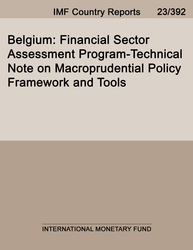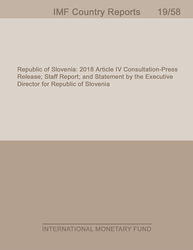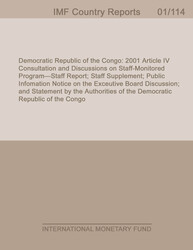
Belgium: Financial Sector Assessment Program-Technical Note on Macroprudential Policy Framework and Tools
Belgium: Financial Sector Assessment Program-Technical Note on Macroprudential Policy Framework and Tools
READ MORE...
Volume/Issue:
Volume 2023
Issue 392
Publication date: December 2023
ISBN: 9798400262340
$20.00
Add to Cart by clicking price of the language and format you'd like to purchase
Available Languages and Formats
| English |
Prices in red indicate formats that are not yet available but are forthcoming.
Topics covered in this book
This title contains information about the following subjects.
Click on a subject if you would like to see other titles with the same subjects.
Finance , Economics- Macroeconomics , Money and Monetary Policy , International - Economics , mortgage market characteristic , coverage ratio , housing loan , bank funding , bank CRE exposure , NBB proposal , Macroprudential policy , Financial sector stability , Financial sector risk , Systemic risk , Macroprudential policy instruments , Global , Europe
Also of interest
Summary
Despite a series of shocks in the recent past, the Belgian financial sector has remained resilient and firm evidence for sustained credit or real estate price booms is limited. The profitability, capital adequacy and liquidity of banks have surpassed their pre-pandemic levels, remaining comfortably above regulatory thresholds. Notwithstanding the blows to the economy inflicted by the pandemic, spillovers from Russia’s war in Ukraine, and the energy crisis, bankruptcies have not materialized, and the quality of loan portfolios has stayed strong as automatic wage indexation and government support have helped households and firms. The credit gap turning positive in late 2017 did not herald the beginning of a prolonged period of further widening, with private sector borrowing expanding at a robust pace until the rapid tightening of financial conditions since 2022 triggered an ebbing of lending growth. Prices for residential and commercial dwellings have steadily increased since 2014, yet market dynamism over this period has been generally below developments seen in other euro area countries, keeping valuations in check.
Copyright © 2010 - 2026
Powered by:
AIDC



